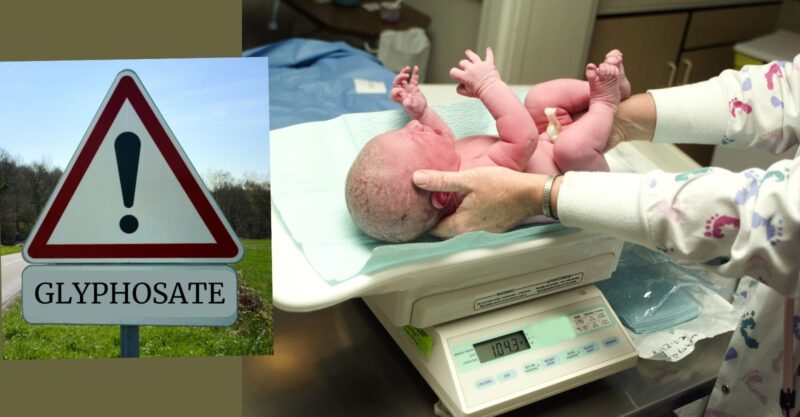Glyphosate’s Harmful Impact on Infant Health in Rural Communities
Glyphosate Exposure Linked to Reduced Birth Weight and Premature Births
By Pamela Ferdinand
Originally published by US Right to Know
New research suggests that glyphosate, the active ingredient in Roundup®, has caused significant harm to the health of infants in rural areas, particularly over the last two decades. The study from the University of Oregon underscores the dangerous effects of this widely-used herbicide on birth outcomes.
Increased Glyphosate Use and Its Impact on Birth Outcomes
Glyphosate use has surged by over 750% since the introduction of genetically modified (GM) crops in 1996, which were designed to withstand direct glyphosate exposure. The study found that this increase in pesticide application has been linked to reduced average birth weight and shorter gestational periods in rural communities, where glyphosate use is most prevalent. Researchers estimated that glyphosate exposure resulted in a 29.8-gram reduction in average birth weight and shortened pregnancies by 1.49 days.
Low Birth Weight and Preterm Birth: Key Indicators of Health Risks
The study reveals that low birth weight (under 5 pounds, 8 ounces) and preterm birth (before 37 weeks) are associated with serious long-term health risks, including infant mortality, developmental disabilities, and chronic conditions like diabetes and obesity. Glyphosate exposure has been shown to increase the likelihood of these conditions, with low birth weight risks rising by 0.65%, very low birth weight by 0.20%, and preterm births by 2.14%.
Disproportionate Effects on Vulnerable Populations
The research highlights a stark disparity in the effects of glyphosate exposure, especially for babies from disadvantaged communities. Infants from non-White, low-income families, particularly those with expected low birth weights, experienced the most significant harm. For example, the study found that the impact of glyphosate exposure on birth weight was up to 12 times larger for infants expected to be born with low birth weights than for those in higher weight categories.
The Long-Term Consequences of Glyphosate Exposure
The study’s authors suggest that glyphosate exposure could lead to substantial health burdens for some populations, estimating that exposure at the highest levels could reduce birth weight by up to 9%. These findings align with growing concerns about glyphosate’s environmental and health effects, especially as it is found in human urine and blood, including that of pregnant women.
Glyphosate and GMOS: A Dangerous Combination
The study also underscores the role of genetically modified crops in driving the rise in glyphosate use. Monsanto’s introduction of GM crops in 1996 removed a natural barrier to over-application, allowing glyphosate to be sprayed directly onto crops and significantly increasing exposure. The researchers argue that without GM crops, the intensity of glyphosate exposure may not have reached current levels.
The Growing Body of Evidence Against Glyphosate
Reynier and Rubin’s findings add to a growing body of evidence linking glyphosate exposure to serious health risks, including those observed in environmental and human health studies. Recent studies in Brazil have connected glyphosate exposure to higher rates of infant mortality and pediatric cancer. Despite these findings, the EPA maintains that glyphosate does not pose a significant health risk.
Call for Reassessment of Glyphosate’s Safety
Given the increasing evidence of glyphosate’s harmful effects, the researchers suggest that it may be time for the EPA to reconsider its position on the safety of this widely used herbicide. Their study, published on January 21, 2025, in Proceedings of the National Academy of Sciences (PNAS), underscores the urgent need for further investigation into the long-term impacts of glyphosate exposure on both the environment and human health.
*******************************************************************************************************************************
If you find value in the work we do at Children’s Health Defense Canada, please consider making a donation so we may continue to protect our most valuable resource…our children.

